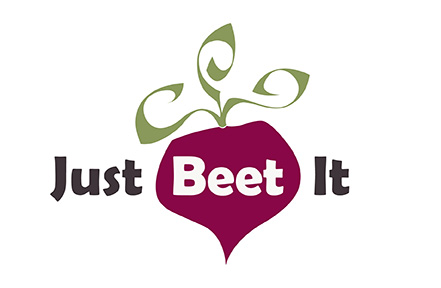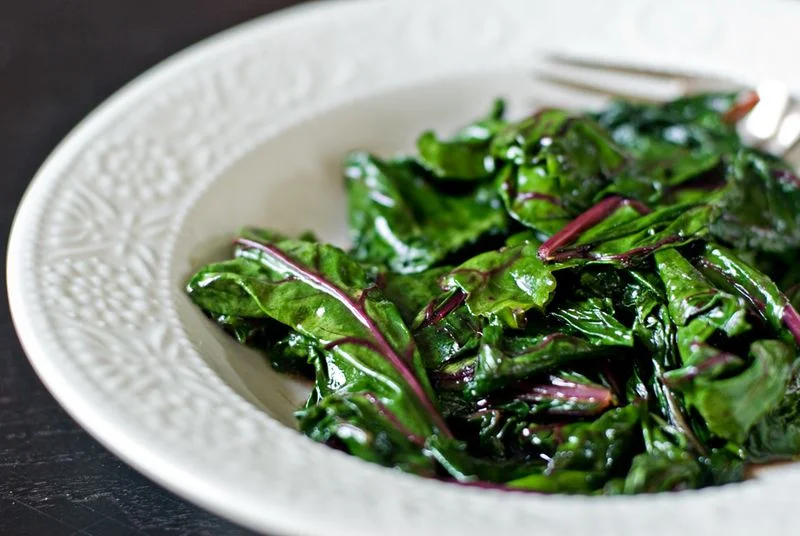Are beet greens edible? Heck yes! The beet's luscious "locks" (beet leaves) are delicious and nutritious containing superhero nutrients, such as Vitamin K, Vitamin A, Vitamin C, Magnesium, Calcium, Zinc, and Iron. Plus - they are filled with fiber.
Although many people are familiar with eating the root portion of the beet, historically beet greens were consumed more than beet roots. Comparable to the flavor and texture of Swiss chard, beet greens are quite versatile. Add raw beet greens* to salads and smoothies or sauté greens as a side dish. Sautéing beet greens with olive oil or toasted sesame oil, garlic, and lemon juice creates a perfect side dish to Beet-Glazed & Fennel Salmon or Beet Black Bean Burgers.
Don't forget to use the beet stems too. The beet is edible from root to leaf; beet stems are filled with nutrients and provide a satisfying crunch. Not sure what to do with beet stems? Try easy Quick-Pickled Beet Stems. Give Some Love to Beet Greens! Your Body Will Thank You.
SUPERHERO SAUTEED BEET GREENS RECIPE
INGREDIENTS
1 bunch beets (about 4 beets) with lush green tops attached
1 tbsp olive oil
2 large garlic cloves, thinly sliced or minced
1 tsp fresh lemon juice
kosher or fine sea salt
freshly ground pepper
Optional Seasonings and Ingredients
Cayenne, red pepper flakes, smoked paprika, cumin, ginger, basil, oregano, coriander, raw cacao, and curry pair well with beet greens.
Red wine vinegar or apple cider vinegar compliment the flavor of beet greens as do gourmet olive oils, such as truffle olive oil and rosemary olive oil. Toasted sesame oil with beet greens is another delicious combination.
Just Beet It Tip
The flavor of beet greens is comparable to chard and spinach, so flash boiling, steaming, or sauteing the greens reduces the seemingly bitter taste.
DIRECTIONS
1. Trim off the greens, leaving 1 inch of the stem attached to each root. Reserve the roots for beet recipes.
2. Trim and discard the thick, fibrous stems from the greens and remove any wilted or spotted leaves. See tips for selecting quality beets and beet greens.
3. Stack the leaves, and then cut the stack in half lengthwise through the center vein.
4. Chop the greens crosswise into large pieces, about 2 inches wide.
5. Rinse the greens in several changes of cold water until they are clean and the water is clear.
6. Dry them in a salad spinner or blot dry with paper towels.
7. In a large sauté pan, heat the oil over medium heat and swirl to coat the pan bottom.
8. Add garlic and sauté until soft but not brown, about 1 minute.
9. Add the greens and toss with tongs until wilted but still crisp-tender and bright green, about 3 minutes.
10. Add the lemon juice. Season greens lightly with salt and pepper, and then give the greens a final toss in the pan.
Serve immediately.
*For individuals with existing and/or untreated kidney or gallbladder problems, you may wish to consult your physician before eating large amounts of beet greens. Like many other healthy foods, beets (notably beet greens) contain amounts of oxalates (naturally occurring substances found in plants, animals, and human beings).
Resources
Morgan, Diane. (2012). Roots: The Definitive Compendium with more than 225 Recipes. San Francisco, CA: Chronicle Books LLC.
Robinson, Jo. (2013). Eating on the Wild Side. New York: Little, Brown and Company.
STILL HUNGRY?










